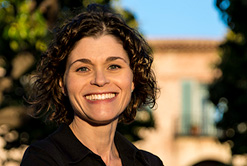Back in 2012, seemingly out of the blue, a new component appeared on AMCAS®. Applicants were being asked to identify up to three of their most significant extracurricular experiences and support their selections with more writing. The instructions stated:
This is your opportunity to summarize why you have selected this experience as one of your most meaningful. In your remarks, you might consider the transformative nature of the experience, the impact you made while engaging in the experience and the personal growth you experienced as a result of your participation. 1325 max characters.
Now the Most Meaningful Paragraphs are par for the course, but applicants routinely make a few avoidable errors in crafting them. Here are tips to do your best work:
1) Don’t merge the descriptors with the Most Meaningful Paragraphs; they are separate sections: You can complete descriptors for up to 15 activities with a maximum of 700 characters each, plus up to three Most Meaningful Paragraphs with a maximum of 1325 characters each. The fact that these are two different tasks might seem clear to some, but every year, I receive AMCAS drafts to edit with merged descriptors and Most Meaningful Paragraphs.
2) Don’t use patient anecdotes in your Most Meaningful Paragraphs: Most medical school applicants have patient vignettes to share, which means that a patient story does not distinguish an applicant from the masses of other candidates. Also, these patient stories can sound trite or even inadvertently condescending. Talk about yourself instead. (See below.)
3) Don’t repeat what you’ve written in your descriptor. The Most Meaningful Paragraphs are an opportunity to delve deeper into your achievements. Let’s say you’re showcasing your experience as a teaching assistant (TA) who was promoted to head TA or simply asked to return the next semester. Highlight teaching achievements that propelled you to get the lead position or the return invite. Did you offer an unconventional way of learning the difficult material? If so, what was it? Did you provide service that was above and beyond what was required? If so, what exactly did you do and how did it help your students? Did you get excellent teaching reviews? By delving deeper, you can truly demonstrate the “transformative nature of the experience, the impact you made while engaging in the experience and the personal growth you experienced as a result of your participation.” Make sure you address at least one of the three topics mentioned in the prompt – transformative nature, impact, and/or personal growth – in your Most Meaningful Paragraph.
Bottom line: The Most Meaningful Paragraphs are an opportunity for you to demonstrate your distinctiveness and worthiness for medical school. Write substantively to make sure you don’t waste the opportunity to further your candidacy.

